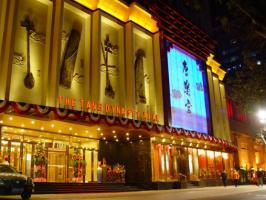Ningxia Grows Grape Industry
Hao Linhai remembers well a speech he delivered to the International Organization of Vine and Wine in 2012 on Ningxia's accession to the organization as an observer, when he received applause as well as questions about the quality of wines from China.
One audience member asked Hao, then vice-president of the Ningxia Hui autonomous region, "Do you make dry wines?"
Dry wines have little residual sugar after the fermentation process turns the sugar in grapes into alcohol. The question implied that Chinese winemaking concepts and techniques lag behind those of other winemaking countries so the resulting products are less sophisticated or even more like grape drinks than wine.
Hao presented data including the average range of sweetness and acid content per liter of wines from the East Foot of Helan Mountain production area, and the questioner nodded.
Just two years later, when Hao was invited to the 37th annual conference of the OIV in Argentina, he was told that the background grape picture on all the invitation letters and for the official emblem that year had been taken in Ningxia.
"I was surprised and inspired. This means international organizations have accepted that Chinese can make good wines and we have a place in the circle," Hao said.
"This also reaffirmed for us to keep going on our way to develop boutique chateaus as a major industry."
With the aim of guiding and further developing the grape industry in Ningxia, the local government set up a management committee to oversee the Ningxia Helan Mountain East Foot Industry Zone. Hao was appointed director of the committee.
He believes the key factor deciding the region's future will be whether the region can insist on internationalization and standardization.
In 2013 and 2014, official figures show that more than half the foreigners who visited Ningxia made the trip for reasons related to wine, such as knowledge exchanges, wine-making, surveys and investment. In the 72 existing vineyards and estates in the East Foot of Helan Mountain, more than half have full-time or part-time winemakers from other countries, totaling 70.
The region has held international winemaking competitions in past years to welcome leaders in the field to make wines from the local grapes.
"We first have to use sophisticated technology, equipment and concepts to make wines that win insiders' recognition and adhere to international standards," Hao said.
"On the other hand, we can't blindly follow whatever the international best practices are. We need to understand our territories."
He said, as an example, that Ningxia has an average of 3,000 hours of sun time per year, longer than Bordeaux, and 200 mm of precipitation, less than Bordeaux.
The local terroir, which features alluvial soil and is irrigated from the Yellow River, is also different.
"Owners and winemakers of our chateaus also produce with their own understanding of wines. We take into consideration that many Chinese consumers prefer wines with less tannin and love to gulp a half or full glass rather than sip.
"Wine is a very individual thing. It is an innovative symbol of culture."
Looking ahead, Hao said the region will keep "growing wines" with a sincere attitude as Chinese production and consumption of wines expands and more young and open-minded people who appreciate diversity become wine drinkers.
"We will carefully develop our region, making it an enterprise that lasts hundreds and thousands of years."














